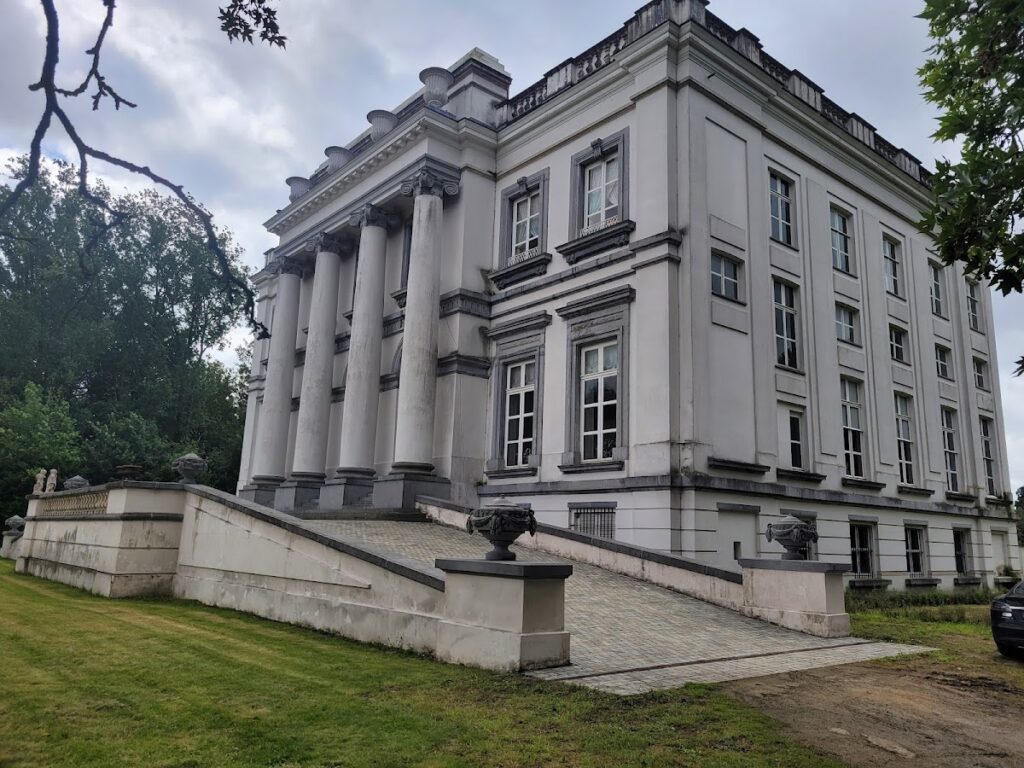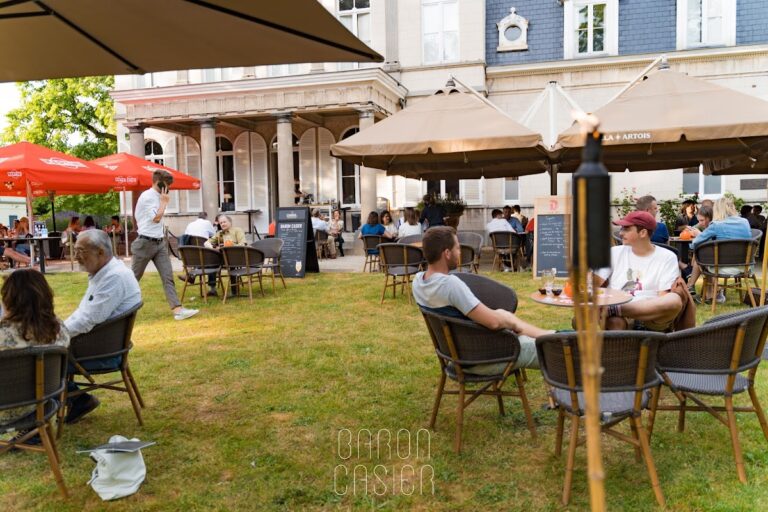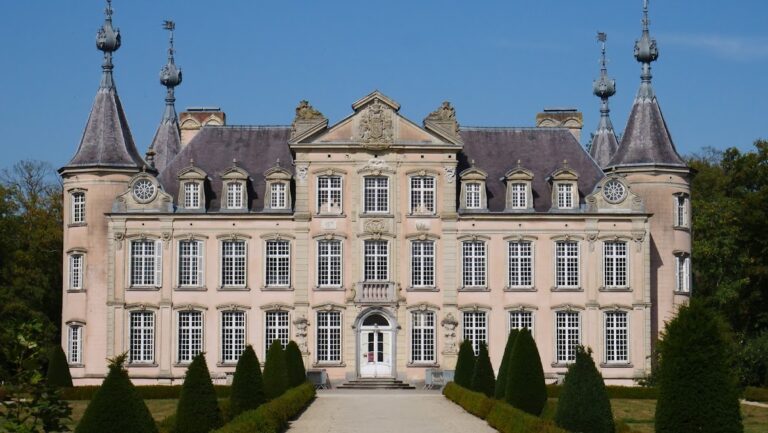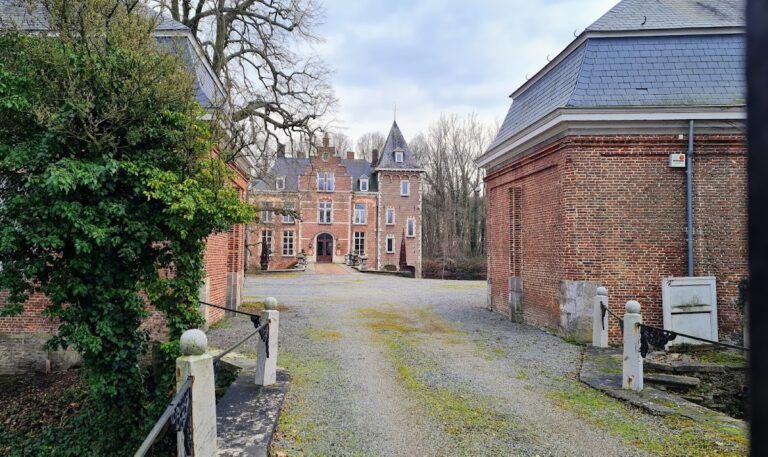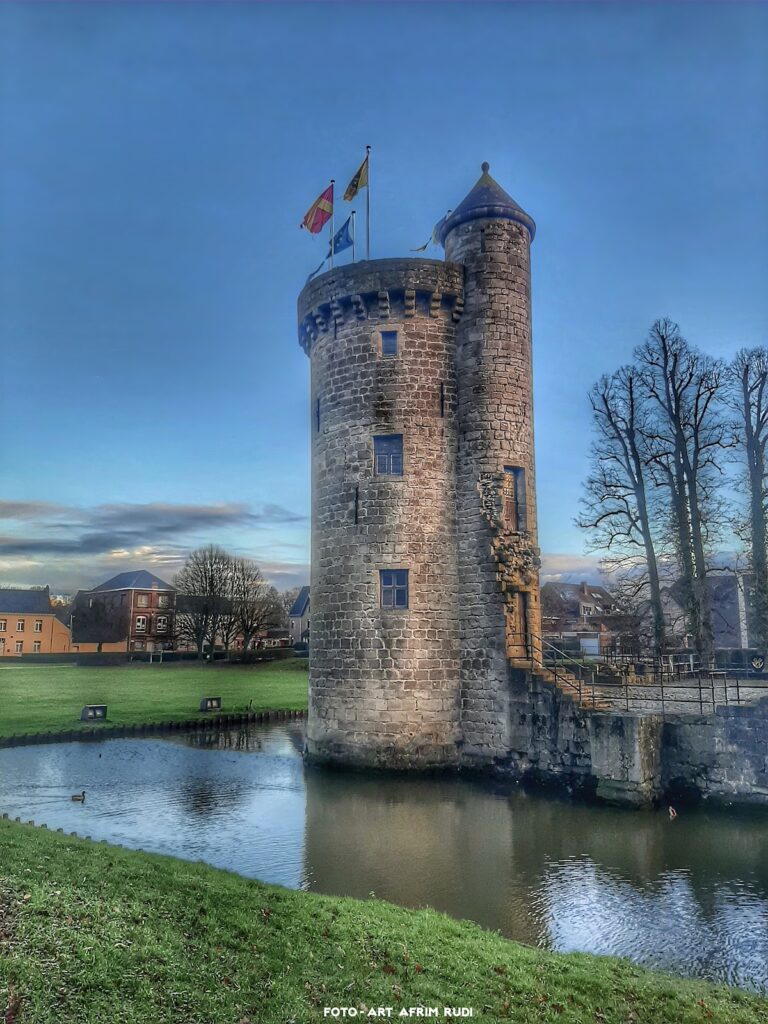Castle of Wannegem: An 18th-Century Aristocratic Residence in Belgium
Visitor Information
Google Rating: 4.6
Popularity: Very Low
Google Maps: View on Google Maps
Country: Belgium
Civilization: Unclassified
Remains: Military
History
The Castle of Wannegem is situated in the municipality of Kruisem in Belgium. This elegant residence was constructed in the late 18th century by European builders of the Austrian Netherlands period, reflecting the tastes of the aristocratic class of that era.
The origins of the estate’s ownership trace back to 1765 when the Baut de Rasmon family purchased the seigneurie of Wannegem-Lede from the Montmorency family. The Baut de Rasmon, a wealthy industrial family from Ghent, also held political influence in the region. Between 1785 and 1786, Baron Alphonse Baut de Rasmon commissioned the construction of the castle as a “maison de plaisance,” or pleasure house, embodying the refined classical style popular in that period. The castle’s design was entrusted to Barnabé Guimard, an architect trained under Jacques-Ange Gabriel, whose notable projects included prominent public buildings in Brussels. Guimard’s work for the castle echoed the elegance of French royal architecture.
Accompanying the residence was a carefully planned park, shaped under the guidance of Christian Cay Lorenz Hirschfeld, a German horticulturist known for his influential ideas on garden design. The park features distinctive elements such as a pond with a garden pavilion and exotic tree species, reinforcing the estate’s character as a cultivated retreat.
Following the death of Adelaïde Vanden Hecke-Baut de Rasmon in 1859, the property came under the ownership of the noble de Ghellinck d’Elseghem family. They retained the castle for over a century until 1996. Since then, the estate has remained in private hands. Recognizing its cultural importance, authorities designated the castle and its park as protected heritage sites in 1971. Nestled between the Scheldt and Lys river valleys, the castle continues to stand as a preserved example of 18th-century aristocratic architecture in Belgium.
Remains
The Castle of Wannegem presents a compact, late 18th-century pleasure house constructed in the classical Louis XVI style, often likened to the famous Petit Trianon at Versailles due to its refined and balanced proportions. Its design emphasizes simplicity and elegant symmetry, characteristic of that period’s French-inspired architecture.
Within the grounds lies a landscaped park featuring a pond with a small island that hosts a classical garden pavilion, blending built elements harmoniously into the natural setting. The vegetation includes noteworthy specimens such as brown beeches (Fagus sylvatica Atropunicea) and a variety of exotic trees that contribute to the garden’s cultivated atmosphere. Among the park’s specialized structures are an orangery, used historically for sheltering citrus trees during winter, and a pheasant aviary, indicating the estate’s role in leisure and ornamental pursuits.
Inside the castle, decorative work reflects classical taste, notably in the entrance hall and the grand salon where Italian artisans known as the Moretti brothers created stuccowork featuring half-reliefs. These sophisticated interior details underline the wealth and aesthetic preferences of the original owners.
The main access to the property is from Huisepontweg road, where the castle’s entrance is located. Both the building and its surrounding landscape are protected as heritage monuments, preserving their historical layouts and artistic features. The site remains intact under private ownership, maintaining its heritage status while safeguarding its architectural and horticultural legacy.

